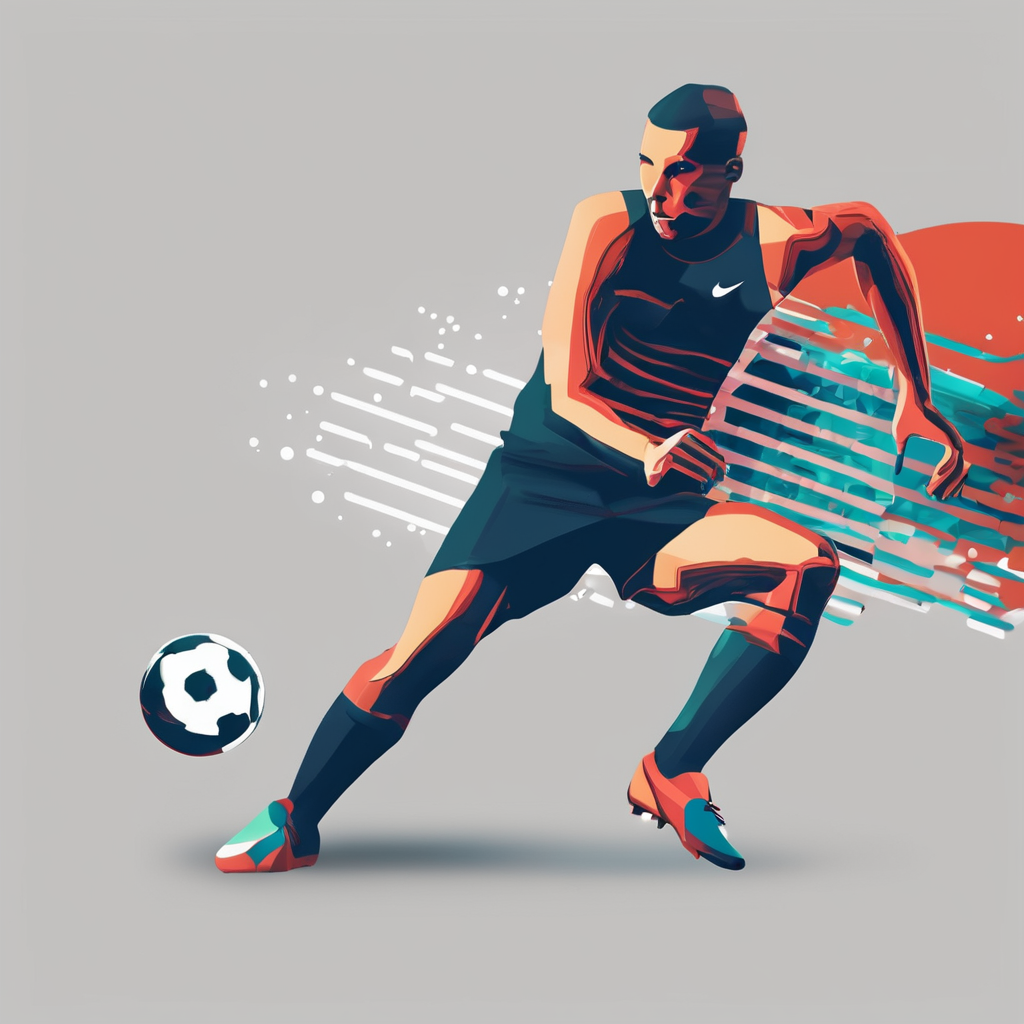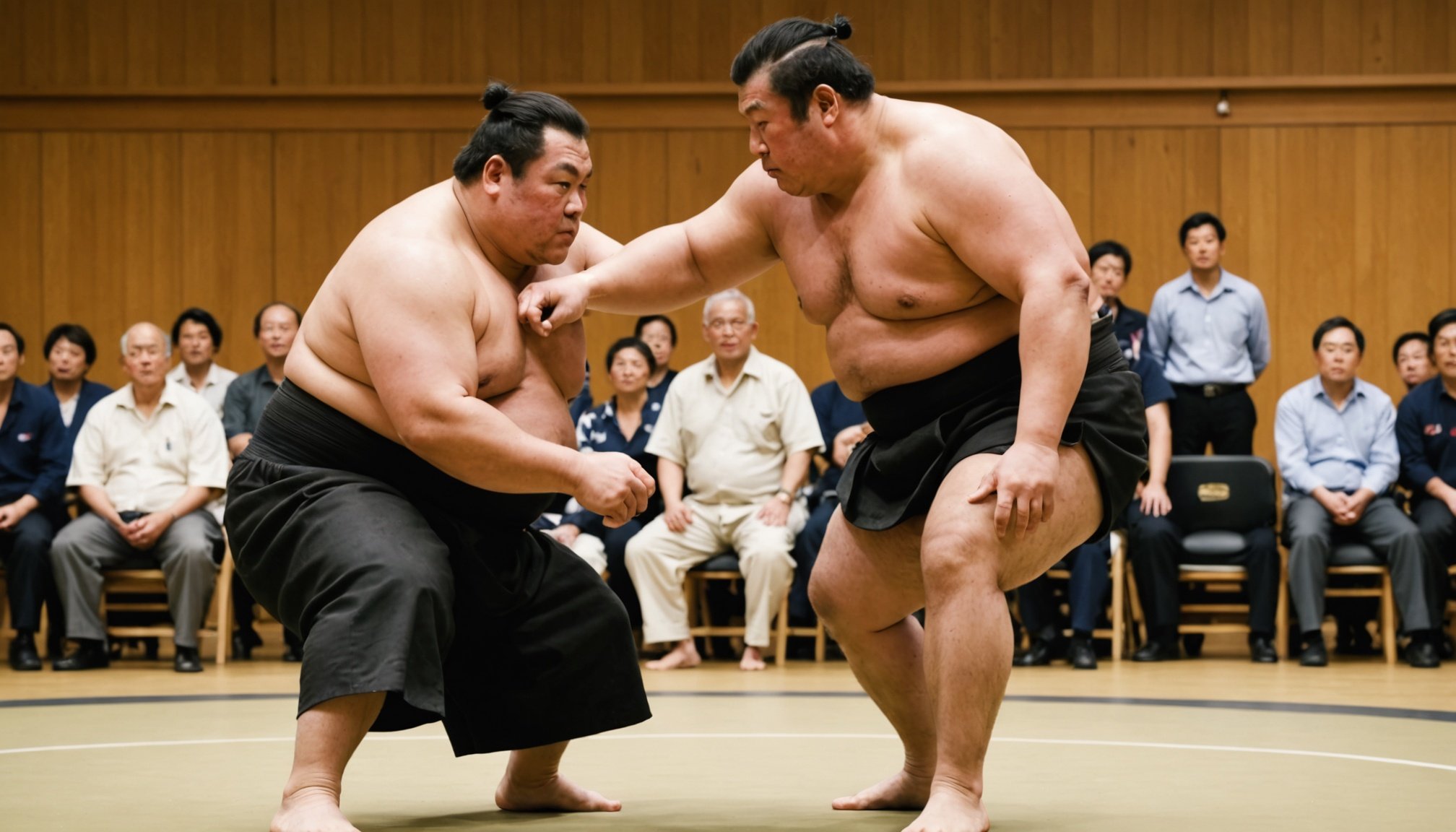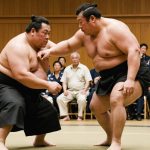Essential Elements for a Powerful Tachiai in UK Sumo
The tachiai techniques form the foundation of every sumo bout, especially for sumo UK wrestlers who must adapt traditional methods to local conditions. An effective tachiai involves explosive power, balance, and timing to gain immediate advantage. Mastering essential sumo skills requires focusing on the wrestler’s stance, foot placement, and hip movement to maximize force while maintaining stability.
In sumo UK, athletes face unique challenges such as limited access to traditional dohyo surfaces and varied training environments. This impacts their ability to replicate authentic tachiai techniques precisely. Adapting is crucial; therefore, coaches emphasize agility and reactive strength to compensate for these constraints.
Also read : How do UK combat sports impact youth development and community engagement?
Biomechanically, a powerful tachiai depends on generating optimal ground reaction forces through quick knee extension and hip rotation. UK sumo wrestlers benefit from strength training that emphasizes lower body explosiveness and core stability, enhancing their launch off the starting line. Also, upper body positioning in tachiai is vital for controlling the opponent’s balance from the first contact.
By refining these biomechanical aspects, sumo UK athletes can improve their tachiai techniques substantially, compensating for environmental differences with enhanced technical proficiency.
Additional reading : Mixed martial arts events in the UK: What are the economic benefits?
Innovative Drills to Enhance Tachiai Speed and Power
Enhancing tachiai speed and power is crucial in sumo wrestling, where the initial clash often determines match outcomes. Incorporating sumo training drills that focus on explosive strength and footwork can dramatically improve an athlete’s start. Practicing tachiai through targeted footwork patterns refines balance and timing, essential for a quick, effective charge.
Resistance training, such as sled pushes or weighted vest exercises, develops the necessary power behind the tachiai. These UK sumo drills adapt strength methods to sumo’s unique demands, emphasizing force generation from lower body muscles. Adding plyometric exercises, like jump squats and bounds, improves fast-twitch muscle responsiveness.
To refine agility crucial for quick tachiai reactions, sumo wrestlers can use agility ladders and cones during drills. These tools promote rapid foot placement and direction changes, essential when countering opponents. Combining such equipment with traditional sumo methods fosters coordination while conserving sumo’s tactical essence.
By integrating creative exercises and agility equipment into sumo training drills, athletes cultivate the perfect blend of speed, power, and precision for a superior tachiai. This multidimensional approach allows wrestlers to perform with confidence and enhance their competitive edge in the ring.
Tactical Adaptations Against Varied Opponents
Adapting sumo tactics is crucial for success in the dohyo. Wrestlers must analyse opponents meticulously, recognising distinct fighting styles and body types. For instance, a robust, forward-charging rikishi demands a different approach than a nimble, evasive one. This opponent analysis aids in tailoring the tachiai, the initial charge, to gain a strategic advantage.
The tachiai adjustment often involves altering stance and timing. A larger adversary may require a lower, more stable posture to withstand the initial impact, while facing a technique-heavy opponent might call for a swift, decisive thrust to preempt their moves. These calculated changes in stance and charge not only disrupt opponents’ plans but also maximise a wrestler’s own strengths.
Utilising video analysis techniques is now a fundamental part of preparing for bouts. By reviewing footage, rikishi can identify recurring patterns, weaknesses, and even anticipate specific moves. This reflective practice enables self-correction and refinement of sumo tactics. Coaches and wrestlers collaborate, extracting insights from recordings to enhance performance.
In sum, effective opponent analysis, tactical tachiai adaptation, and modern video analysis techniques form the backbone of sumo strategy, enabling wrestlers to outthink and outperform varied opponents consistently.
Practical Training Routines for UK Sumo Wrestlers
Essential approaches to enhance tachiai and overall sumo skills
A well-structured sumo practice routine is fundamental to excelling in UK sumo wrestling, especially when focusing on the tachiai—the crucial initial charge. Typically, UK sumo training involves a weekly schedule that balances intensity and recovery. Wrestlers engage in targeted Tuesdays and Thursdays dedicated strictly to tachiai improvement exercises, emphasizing explosive power and swift reaction times.
Key drills integrate power, balance, and timing seamlessly. For example, repeated tachiai collision drills help refine technique and build muscle memory, while balance exercises, such as single-leg holds and controlled falls, develop stability crucial during matches. Timing drills often synchronize rapid step patterns with breath control, fostering synchronization and anticipation.
Collaboration plays a significant role in UK sumo training. Regular sparring sessions offer invaluable real-time practice against varied opponents, fostering adaptive strategies and resilience. The UK sumo community encourages peer feedback during these sessions, enabling wrestlers to analyze tactics and improve together in a supportive environment.
By adhering to this holistic approach combining strength, precision, and community-driven sparring, UK sumo wrestlers progressively enhance their tachiai effectiveness and overall competitive edge.
Lessons from Elite Sumo Wrestlers
Sumo wrestling, deeply rooted in tradition, offers valuable lessons through the study of elite sumo examples. These champions demonstrate mastery in the professional tachiai, the crucial initial charge that often determines the bout’s outcome. Analyzing case studies reveals how subtle adjustments in stance, timing, and force maximize impact during this moment.
Japanese sumo greats exemplify precision and power, emphasizing explosive forward momentum and balance. International wrestlers, meanwhile, adapt these techniques to their unique physiques, reflecting sumo’s global evolution. Video tutorials break down iconic tachiai moments frame by frame, showing how body angle and foot placement create the competitive edge.
UK wrestlers eager to improve can adopt these insights by focusing on the tachiai’s mechanics; controlled aggression combined with rapid reaction is key. Incorporating drills that mimic these professional tachiai spurts helps build muscle memory and timing. For example, watching and emulating these elite sumo examples deepens understanding of sumo’s physical and mental demands, paving the way for success in both training and competition.
By studying various case studies and professional tachiai executions, wrestlers can blend tradition with innovation, ultimately elevating their performance in the ring.
Monitoring Progress and Preventing Injury
Tracking progress in sumo training is crucial for both performance improvement and injury prevention. One effective method involves progress tracking through regular video analysis, measuring strength increases, and recording match outcomes. This helps athletes identify areas needing adjustment and prevent plateauing.
In the context of sumo injury prevention, particular attention must be given to common problems caused by the tachiai biomechanics—the initial charge where explosive power is key. UK athletes often face injuries such as knee ligament strains and lower back stress from improper weight distribution or abrupt movements. Implementing dynamic warm-ups and focused strength exercises tailored to support these vulnerable areas can greatly reduce injury risk.
Biomechanical feedback plays a pivotal role in refining tachiai techniques. Utilizing motion capture systems or wearable sensors enables athletes to analyze their stance, timing, and force application. This data-driven approach reveals inefficiencies or unsafe patterns in movement, guiding personalized adjustments to enhance safety and effectiveness.
By combining diligent progress tracking, careful attention to sumo injury prevention, and detailed study of tachiai biomechanics, athletes can maximize their training outcomes while minimizing injury risks through informed, evidence-based methods.






